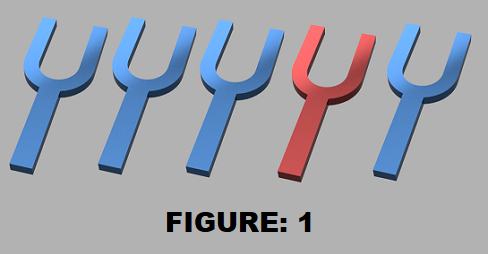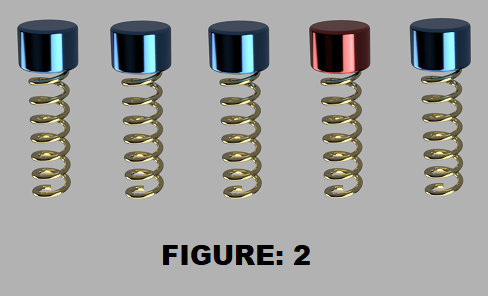.:: Fourier Transform Analogy ::.
Short essay about Fouruer Transform
Fourier transform converts an amplitude over time data set into a amplitude over frequency data set. An example of its application is the equalizer in a sound system. The equalizer takes a sample of the sound and converts it into an amplitude over frequency bar graph. Every sample of an analog wave form can be broken down into a set of sine waves. It is even possible to make something as complex as a square wave by combining multiple sine waves together. There are many mathematical models and algorithms to accomplish this task, however there aren't many mechanical analogies for the process. Using a mechanical analogy, Fourier transform can be accomplished by setting up a row of tuning forks which pick up sound from a piano as seen in Figure 1. You can set up a tuning fork for each note which will resonate with the music. When you press the C key, the tuning fork which resonates with the C key will begin to vibrate while the others are at a stand still. In order to simulate a tuning fork inside of a computer program, the software engineer must create a model which works the same way. The best and most simple method is to simulate a spring-mass system which also has the property of having a mechanical resonance and behaves the same way as a tuning fork. In Figure 2, you can see a model of a spring-mass tuning fork analogy. Using Hooke's law and a one dimensional projectile simulation you will have all the elements necessary to make the simulation work. Each spring-mass element can be fed an analog signal and will resonate if it is exposed to a sine wave component which matches it. An amplitude over frequency data set can be created by measuring the maximum velocity or maximum deflection of each oscillating mass, which is used as the output of the transform.

